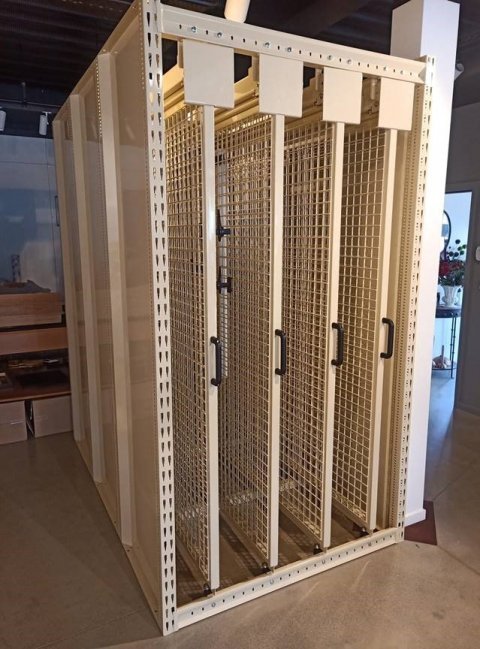Art and museums hold an irreplaceable role in preserving and showcasing humanity’s rich cultural heritage. They serve as guardians of masterpieces, carefully curating and exhibiting works that evoke emotions, inspire creativity, and offer glimpses into the past. Behind the scenes, art and museum storage solutions play a vital role in ensuring the longevity and safety of these priceless treasures.
Preserving art and artifacts requires a meticulous approach to storage, considering factors such as environmental conditions, security, organization, and accessibility. Innovative storage solutions have emerged over the years, addressing the unique challenges faced by museums and art galleries. Let’s explore some of the key elements that contribute to effective art and museum storage.
Environmental Control: Maintaining proper environmental conditions is crucial for preserving delicate artwork. Temperature, humidity, and light levels must be carefully controlled to prevent damage caused by fluctuations or prolonged exposure. Climate control systems are employed to regulate these factors, ensuring a stable environment for the stored artworks. Specialized storage facilities are equipped with advanced HVAC systems, moisture barriers, and UV-filtering windows to create an ideal storage environment.
Art Racking and Shelving: Proper storage systems are essential to maximize space utilization and protect artworks from physical damage. Art racking and shelving solutions offer customizable options to accommodate various sizes, weights, and shapes of art pieces. Adjustable shelving units, modular racks, and specialized hanging systems provide flexible storage options, allowing for efficient organization and easy access to stored items.

Archival Materials and Packaging: Archival-quality materials and packaging play a vital role in preventing deterioration and protecting artworks during storage. Acid-free boxes, folders, and tissue papers are used to safeguard delicate documents, photographs, and artworks on paper. For three-dimensional objects, custom-made crates and padding are utilized to provide cushioning and support during transportation and storage. These materials are designed to be chemically stable and inert, reducing the risk of degradation over time.
Security Measures: Artworks stored in museums are often of immense historical, cultural, and financial value, making security a top priority. Museums employ state-of-the-art security systems, including surveillance cameras, motion sensors, and intrusion detection systems, to safeguard their collections. Access control measures, such as restricted entry zones and secure storage vaults, help prevent unauthorized handling or removal of artworks. In some cases, artworks are protected by specially designed display cases or framed with security glass to deter theft and vandalism.
Digital Documentation and Inventory Management: With the advancement of technology, digital documentation and inventory management systems have become indispensable tools for museums and galleries. High-resolution digital photography, 3D scanning, and database software enable accurate cataloging, tracking, and indexing of artworks. These systems streamline inventory management, facilitate loan processes, and aid in the identification and research of stored items. Digital documentation also acts as an invaluable resource for research, education, and virtual exhibitions.
Climate-controlled Transport: Transporting artworks between locations requires careful planning and specialized vehicles. Climate-controlled trucks equipped with shock-absorbing suspensions and advanced security systems ensure safe transportation of fragile and valuable artworks. These vehicles maintain stable temperature and humidity levels, protecting the art during transit. Skilled art handlers and riggers with expertise in handling delicate objects are employed to minimize the risk of damage.
Conservation and Restoration Laboratories: Museums often have dedicated conservation and restoration laboratories where experts work to repair, preserve, and restore artworks. These facilities provide controlled environments, specialized equipment, and materials necessary for art conservation treatments. From cleaning and stabilizing artworks to reconstructing damaged elements, these laboratories play a vital role in extending the lifespan of art pieces and maintaining their aesthetic integrity.
In conclusion, art and museum storage solutions are essential for preserving and protecting our cultural heritage. The careful combination of environmental control, specialized storage systems, security measures, digital documentation, and conservation laboratories ensures that artworks remain intact for future generations to appreciate. With ongoing advancements in technology and the commitment of institutions to the preservation of art, museums continue to serve as custodians of our collective memory, ensuring that masterpieces endure the test of time.

